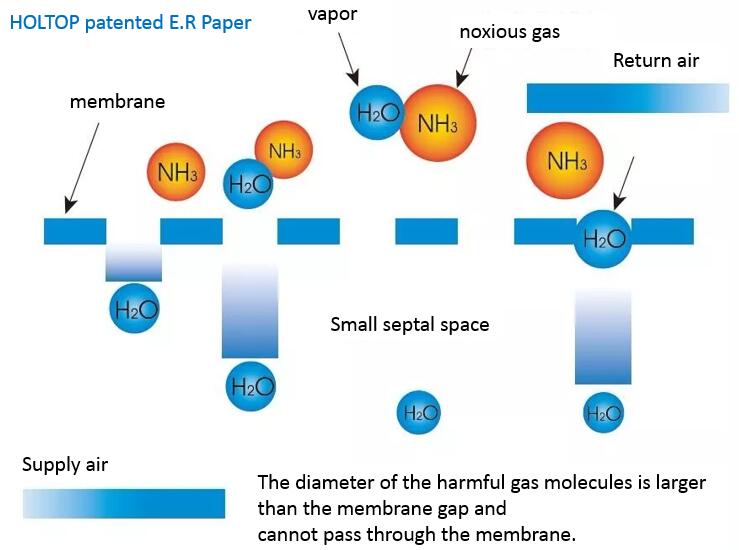Decreasing the energy consumption of heating, ventilation and air conditioning (HVAC) systems is becoming increasingly important due to rising cost of fossil fuels and environmental concerns. Therefore, finding novel ways to reduce energy consumption in buildings without compromising comfort and indoor air quality is an ongoing research challenge. One proven way of achieving energy efficiency in HVAC systems is to design systems that use novel configurations of existing system components. Each HVAC discipline has specific design requirements and each presents opportunities for energy savings. Energy efficient HVAC systems can be created by re-configuring traditional systems to make more strategic use of existing system parts. Recent research has demonstrated that a combination of existing air conditioning technologies can offer effective solutions for energy conservation and thermal comfort. This paper investigates and reviews the different technologies and approaches, and demonstrates their ability to improve the performance of HVAC systems in order to reduce energy consumption. For each strategy, a brief description is first presented and then by reviewing the previous studies, the influence of that method on the HVAC energy saving is investigated. Finally, a comparison study between these approaches is carried out.
ASHRAE standards recommend the amount of required fresh air for different buildings. Unconditioned air greatly increases the building’s cooling needs, which ultimately leads to an increase in the overall energy consumption of the building’s HVAC systems. In the central cooling plant, the amount of fresh air is determined based on the upper limits of the concentrations of indoor air pollutants which normally is between 10% and 30% of the total air flow rate [69]. In modern buildings the ventilation losses can become more than 50% of total thermal losses [70]. However, mechanical ventilation can consume up to 50% of electrical power used in residential buildings [71]. In addition, in hot and humid regions mechanical ventilation systems appropriate about 20–40% of the total energy usage of the air conditioning systems[72]. Nasif et al. [75] studied the annual energy consumption of an air conditioner coupled with an enthalpy/membrane heat exchanger and compared it with a conventional air conditioning. They found that in humid climate, the annual energy saving of up to 8% is possible when using the membrane heat exchanger instead of a conventional HVAC system.
Holtop total heat exchanger is made of ER paper which is featured by high moisture permeability, good air tightness, excellent tear resistance, and aging resistance. The clearance between the fibers is very small, so only the moisture molecules of small diameter can go through, the odor molecules of larger diameter are unable to pass through it. By this means, the temperature and humidity can be recovered smoothly, and prevent the pollutants infiltrating to the fresh air.


6.Effect of building behavior
The energy consumption of an HVAC system depends not only on its performance and operational parameters, but also on the characteristics of the heating and cooling demand and the thermo dynamic behavior of the building. The actual load of the HVAC systems is less than it is designed in most operating periods due to building behaviour. Therefore, the most important factors that contribute to HVAC energy usage reduction in a given building is proper control of the heating and cooling demand. Integrated control of building cooling load components, such as solar radiation, lighting and fresh air, can result in significant energy savings in a building’s cooling plant. It is estimated that around 70% of energy savings is possible through the use of better design technologies to coordinate the building demand with its HVAC system capacity. Korolija et al. investigated the relationship between building heating and cooling load and subsequent energy usage with different HVAC systems. Their results indicated that the building energy performance cannot be evaluated only based on building heating and cooling demand due to its dependency on HVAC thermal characteristics. Huang etal. developed and evaluated five energy management control functions programmed according to the building behavior and implemented for a variabl air volume HVAC system. Their simulation results demonstrated that energy saving of 17% can be achieved when the system is operated with these control functions.
Conventional HVAC systems rely heavily on energy generated from fossil fuels, which are being rapidly depleted. This together with a growing demand for cost-effective infrastructure and appliances has necessitated new installations and major retrofits in occupied buildings to achieve energy efficiency and environmental sustainability. Therefore, finding novel ways towards green buildings without compromising comfort and indoor air quality remains a challenge for research and development. The overall attainable reduction in energy consumption and enhancement of human comfort in the buildings are dependent on the performance of HVAC systems. One proven way of achieving energy efficiency in HVAC systems is to design systems that use novel configurations of existing system components. Recent research has demonstrated that a combination of existing air conditioning technologies can of- fer effective solutions for energy conservation and thermal comfort. In this paper various energy saving strategies for HVAC systems were investigated and their potential to improve the system performance were discussed. It was found that several factors such as climatic conditions, expected thermal comfort, initial and capital cost, the availability of energy sources and the application.
Read the full paper on REVIEW-PAPER-ON-ENERGY-EFFICIENCY-TECHNOLOGIES-FOR-HEATING-VENTILATION-AND-AIR-CONDITIONING-HVAC
TY – JOUR
AU – Bhagwat, Ajay
AU – Teli, S.
AU – Gunaki, Pradeep
AU – Majali, Vijay
PY – 2015/12/01
SP -
T1 – Review Paper on Energy Efficiency Technologies for Heating , Ventilation and Air Conditioning (HVAC)
VL – 6
JO – International Journal of Scientific & Engineering Research
ER -
Post time: Jul-10-2020








